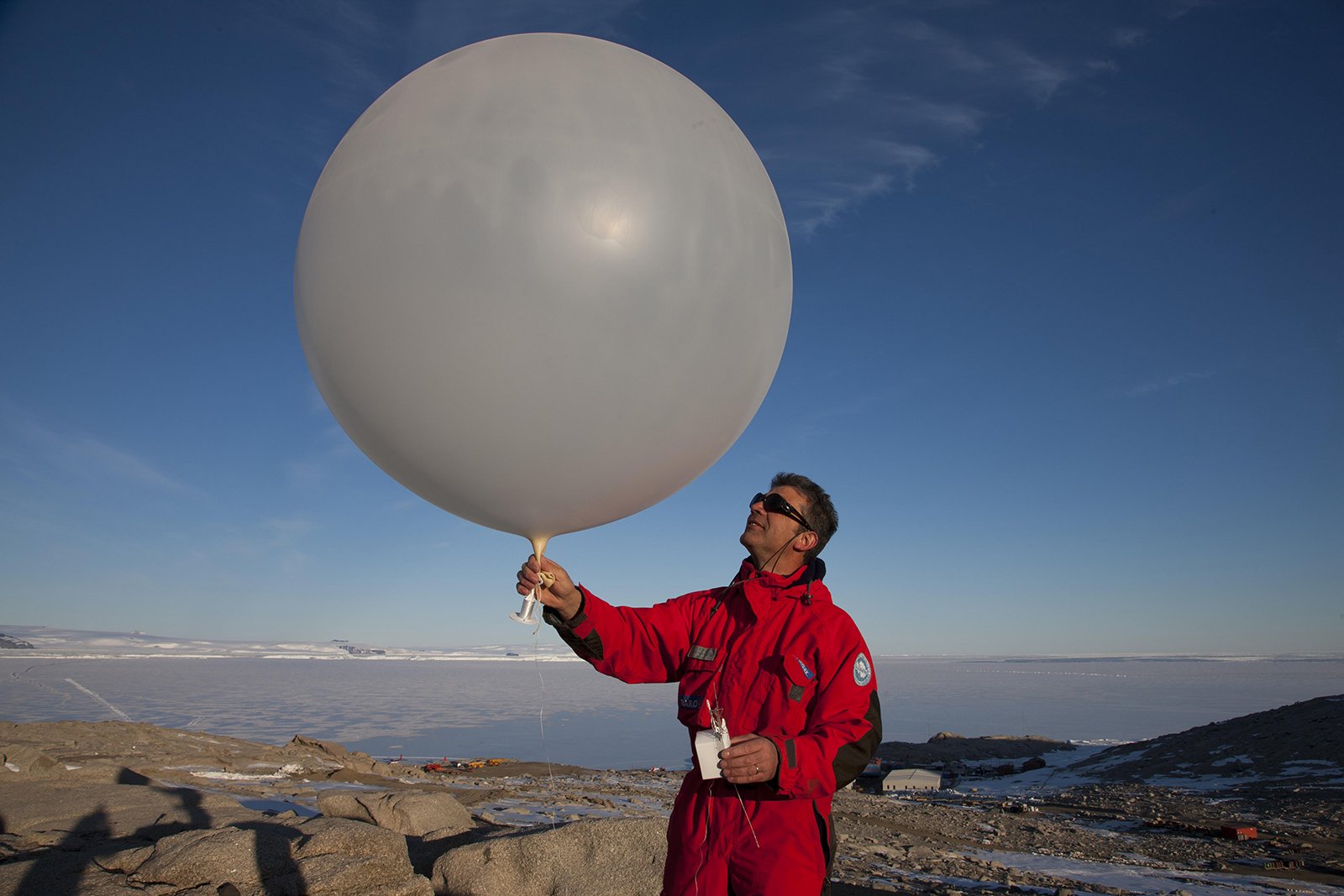 Instruments -> Radiosounding system
Instruments -> Radiosounding system

Radiosounding system
The radio sounding allows the monitoring of various atmospheric parameters along the vertical profile. The measure is carried out by means of a Radiosonde (VAISALA RS41) that is released into the atmosphere attached to a balloon inflated with helium. Components of a radiosonde:
- a GPS receiver
- a VHF transmitter
- a barometer (Barocap silicon)
- a Relative Humidity sensor (F-Thermocap)
- a sensor of Temperature (H-Humicap).
Pushed by the balloon the radiosonde rises up to a height of 25-30 km with a speed of about 2-5 m/s. As the radiosonde rises,
sensors measure values of pressure, temperature and Relative humidity every two seconds; the exact position of the radiosonde is tracking via GPS.
The data are transmitted via VHF to a ground receiver system (VAISALA SPS311) managed by a specific software (DIGICORAIII).
Data are stored and horizontal and vertical components of the wind speed are calculated by means of DIGICORAIII.
Finally, data are encoded (digital format and text) and assimilated in the Global Telecommunication System (GTS) of World Meteorological Organization (WMO)
for initializing the main weather patterns in numerical models.
At both stations, the Observatory has installed an atmospheric radiosounding system VAISALA DIGICORAIII.
During the summer campaign at Mario Zucchelli Station weather balloons are released twice a day (00 and 12 UTC).
The first launch was carried out in 1988 using a VAISALA MARWIN system and RS80 radiosonde.
In 2006 the newer RS92 radiosonde were introduced and in 2009 the radio sounding system was replaced with a VAISALA DIGICORA III.
Conversely, at Concordia Station launches are performed once a day at 12 UTC all year round. At the beginning, in 2005 the radio sounding system was the
VAISALA DIGICORA III with RS80 radiosonde. In 2006, radiosondes were replaced with the RS92.
Did you know ...
Balloons inflated with helium reach a height of about 30 km and then explode.

